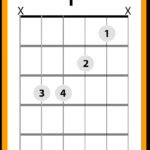Are you looking for a fun and engaging way to introduce music to a child, or perhaps even rediscover your own musical curiosity? Toy Guitars might just be the perfect starting point. Often underestimated, these instruments are not just playthings; they are genuine tools for musical exploration and learning. Let’s delve into the world of toy guitars and understand why they are an excellent choice for beginners of all ages.
Are Toy Guitars Real Musical Instruments?
Absolutely! While they may be smaller and simpler than their full-sized counterparts, many toy guitars are designed to play real chords and melodies. Take, for instance, 3-string guitars. Interestingly, many standard 6-string guitar chords actually only use three notes. Toy guitars, especially those like Loog Guitars, are designed to allow you to play actual chords, making learning songs surprisingly accessible. While a toy guitar might not produce the rich, full sound of a concert guitar, this simplicity is precisely what makes them so approachable, especially for children and beginners. They offer a fantastic introduction to the fundamentals of guitar playing without overwhelming learners.
Can Learning on a Toy Guitar Transition to a Full-Size Guitar?
Yes, seamlessly! Learning on a toy guitar, especially a well-designed one, is not a detour but rather a stepping stone to playing a standard 6-string guitar. Many toy guitars, including Loog models, use the same first three strings and tuning as a 6-string guitar. This clever design means that everything you learn on a toy guitar – chord shapes, strumming patterns, basic melodies – directly translates to a standard guitar. The transition feels natural and intuitive. You can even use chord charts and songbooks designed for 6-string guitars with a 3-string toy guitar; simply focus on the finger placements for the first three strings and ignore the rest.
What’s the Right Age to Start with a Toy Guitar?
The age recommendation varies depending on the specific toy guitar model. For very young children, such as toddlers aged 3 and up, smaller models like the Loog Mini are ideal. For older kids, around 6 years and up, the slightly larger Loog Pro is a great fit. And for children around 9 years and older who are more serious about learning, the Loog Pro VI provides a more advanced toy guitar experience while still remaining beginner-friendly. Choosing the right size ensures comfort and playability for different age groups.
Are Toy Guitars Just for Kids?
Not at all! While toy guitars are excellent educational tools for children, they are certainly not limited to kids. The appeal of a toy guitar extends to anyone who enjoys playing music or wants to learn in a simplified way. Many adults, including parents, grandparents, and even professional guitarists, find toy guitars enjoyable and useful. They can be great for travel, songwriting on the go, or simply as a fun and less intimidating way to engage with music.
How Do You Tune a Toy Guitar?
Tuning a toy guitar is usually straightforward. The most common tuning for many toy guitars, especially 3-string models, is GBE (from lowest to highest string). This is the same tuning as the top three strings of a standard 6-string guitar. This consistent tuning further aids in the transition to a full-size guitar. However, toy guitars are also about experimentation! Feel free to explore different tunings like Open A or Open G to discover new sounds and musical possibilities.
Are Left-Handed Toy Guitars Available?
Yes! Recognizing that left-handed individuals need accessible instruments too, many brands now offer left-handed versions of toy guitars. This inclusivity ensures that everyone can comfortably learn and play, regardless of their dominant hand.
Acoustic or Electric Toy Guitar for Beginners?
Choosing between an acoustic or electric toy guitar for a beginner often comes down to personal preference. Interestingly, some argue that electric guitars can be easier to start with because the strings are often closer to the fretboard, making them more comfortable to press down, especially for small fingers. Ultimately, the best choice is the model that most excites the beginner and encourages them to play.
Toy Guitars for Schools and Education
Toy guitars are increasingly recognized as valuable educational tools. Their simplicity, combined with their ability to teach real musical concepts, makes them perfect for classroom settings. Many manufacturers offer special pricing and educational resources for schools and institutions looking to incorporate toy guitars into their music programs.
Conclusion: Embrace the Fun and Learning with Toy Guitars
Toy guitars are much more than simple playthings. They are accessible, educational, and genuinely fun instruments that can spark a lifelong love of music. Whether you are a parent looking to introduce your child to guitar, an educator seeking engaging classroom tools, or an adult wanting a simplified musical outlet, exploring the world of toy guitars is a fantastic first step. Unlock your musical potential and discover the joy of playing with a toy guitar today!

